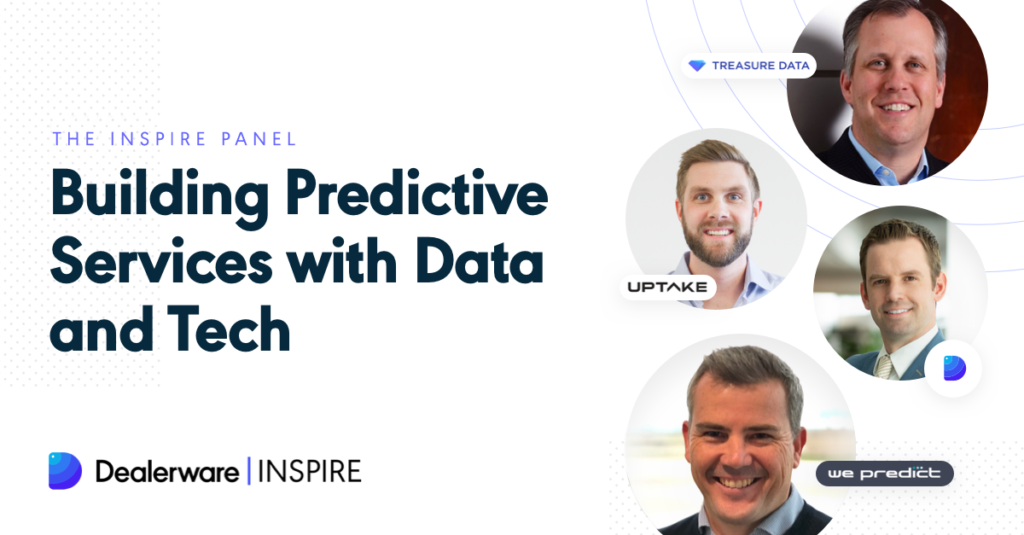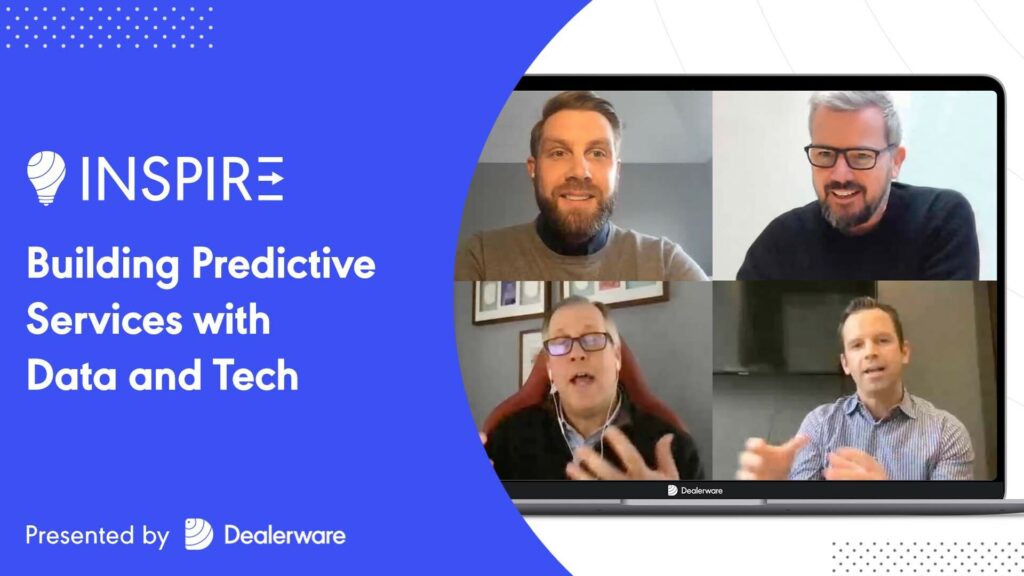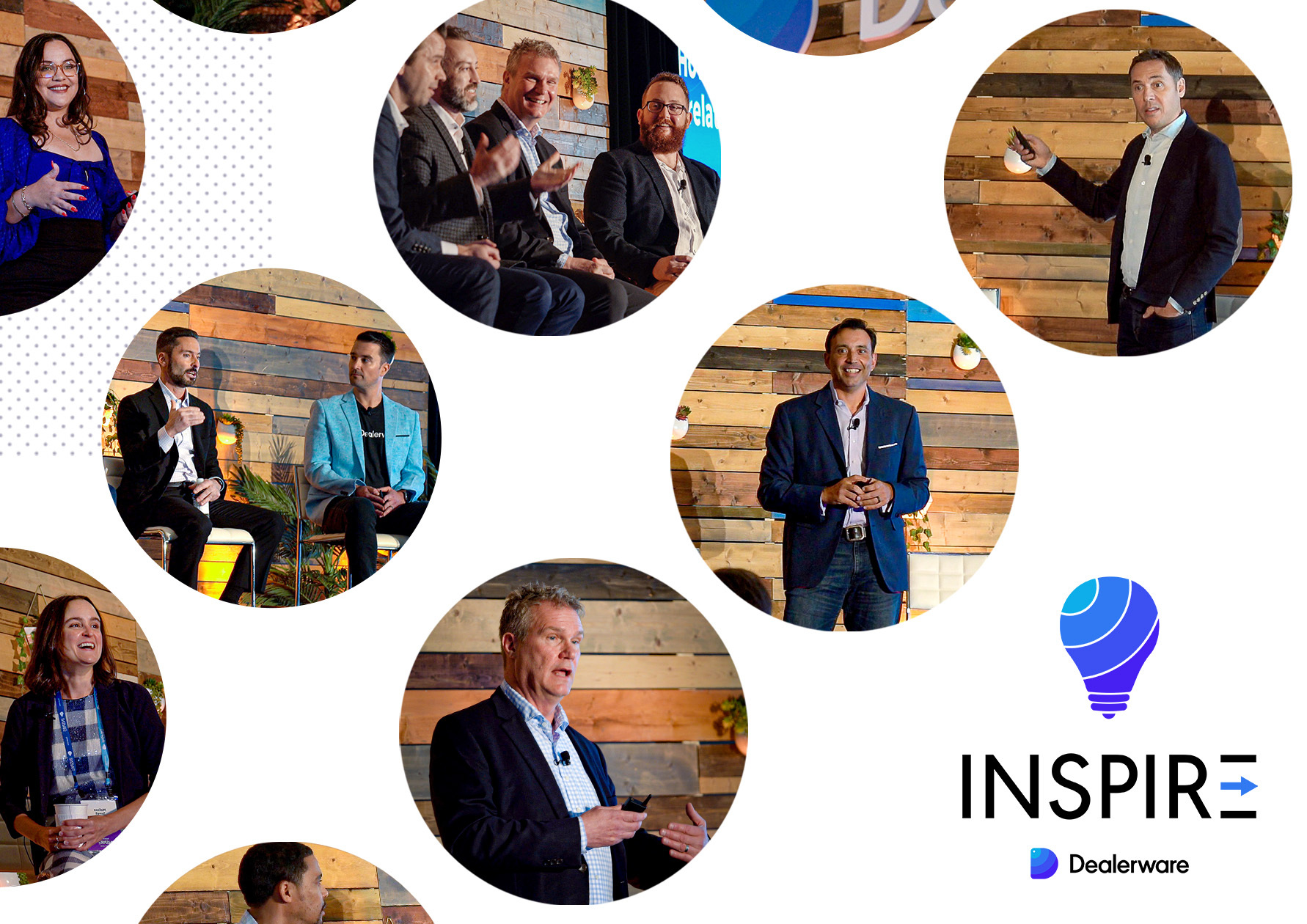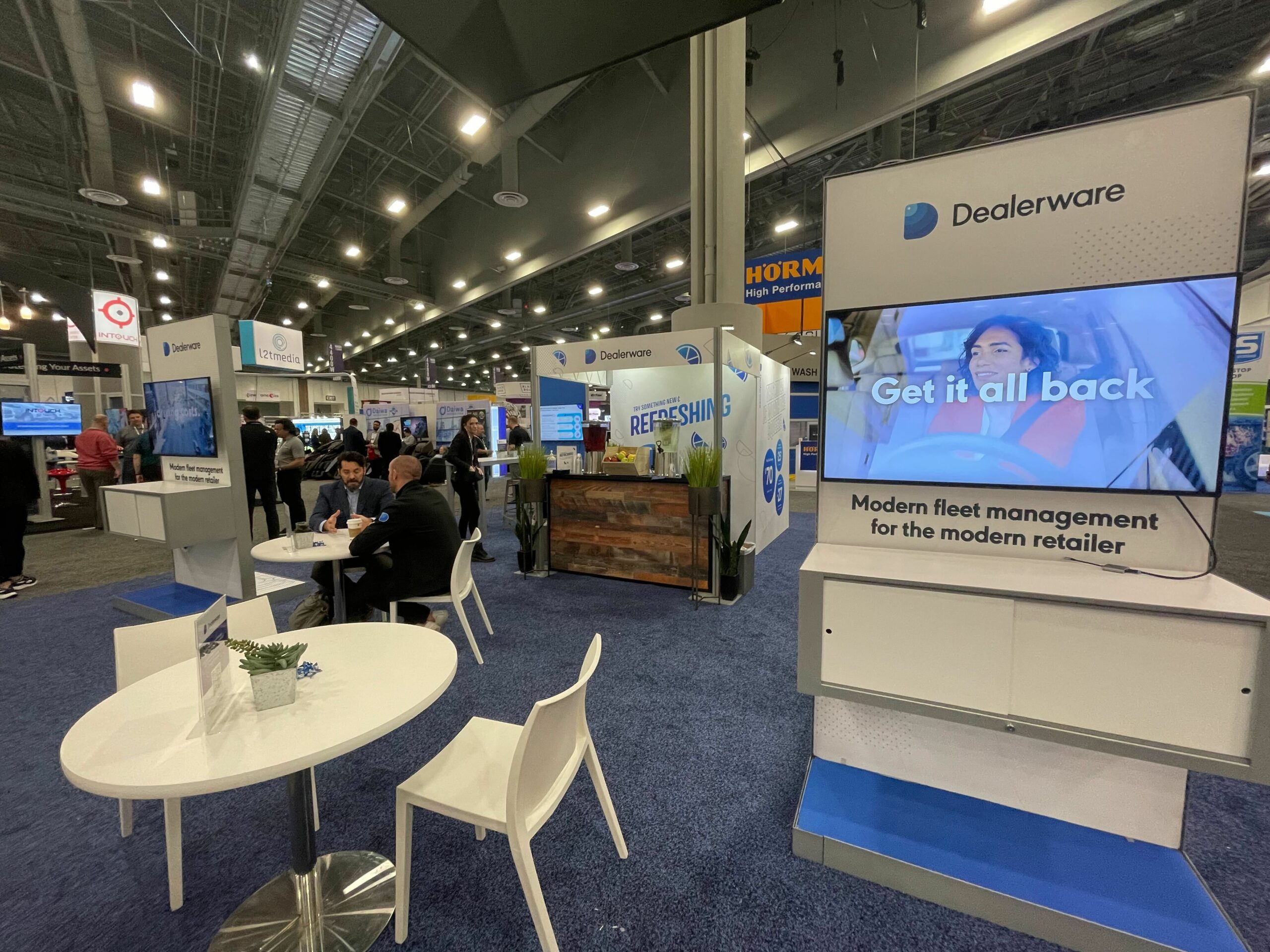Our 2021 INSPIRE Sessions livestream series brought together thought leaders from retail, tech, real estate and more to share interesting perspectives about the ways commerce is changing. We’ve learned about the evolution of consumer habits, new frontiers in sharing-economy business models, the business impact of smart partnerships and, most recently, opportunities the automotive industry has to benefit from predictive services built on big data.
In our fourth and final INSPIRE livestream, Dealerware CEO Matt Carpenter joined Andrew Shaffer, Automotive Industry Principal for Treasure Data; Braden Pastalaniec, VP of Transportation at Uptake; and James Davies, Founder and CEO of WePredict, to talk about the ways data today supports strategic decision making around fleets.
What’s new in Big Data?
It’s been about 10 years since Big Data became a Big Talking Point. To kick off our INSPIRE conversation, moderator Courtney White, VP of Marketing for Dealerware, asked the panel to point at strategies businesses employ today that they didn’t have the data to launch even five years ago.
The panelists agreed with Carpenter’s point that the downsides for fleets are downtime and surprises to the customer. Today, we have the fleet readiness data – fuel and battery levels, vehicle location, etc. – that, coupled with data about market demand, allows fleet operators to deliver the right vehicle for specific customer demands, price it in line with what the market supports and provide transportation service with minimal friction, and no surprises.
The INSPIRE Panel

“No surprises” is an important point for any fleet, whether it’s a consumer shared fleet, a corporate fleet or a fleet of industrial assets. In fact, to Davies, it’s fast becoming a minimum expectation for consumers, and by providing data about component failure rates, WePredict tries to make sure that vehicle downtime doesn’t need to become the customer’s problem. Instead, both Davies at WePredict and Pastalaniec at Uptake focus on avoiding unplanned downtime – if a component or a vehicle is nearing a time when failure or downtime is likely, fleet operators should (and can) have the data they need to plan for and minimize that downtime.
On top of preventing fleet users from bearing the negative impacts of unplanned downtime, Treasure Data’s Shaffer also said data about vehicle readiness could help fleet operators communicate with their customers better, too. Rather than waiting for customers to call about a problem, then escalating that problem through a call center, fleet operators can proactively solve vehicle issues by reaching out to customers, informing them that the vehicle they have needs some maintenance, and providing a solution for them to get a new vehicle before the one they’re using goes down.
Don’t get your signals crossed
The panel’s discussion showed just how many ways different data sources can come together to help businesses reduce loss and generate cash flow, but for a lot of businesses, the dream of data-driven decision making feels far away. The starting point – as Shaffer pointed out – can often be dealing with a mess of data silos across a network that’s grown organically as companies grow.
Feeling like you have more data than you know what to do with can be a natural consequence of growth for any business, not something to view as a shortcoming. The first step, Shaffer said, is acknowledging the silo problem and making a plan to get your arms around all the data you’ve created.
Similarly, Pastalaniec shared that his customer onboarding meetings typically start with a tight focus: what problem will have the biggest business impact if you solve it? Starting from that question, he said, can help different stakeholders to look over their data sources and understand how they apply to different problems. It also gives a quick return on the time investment made to approach a problem by first looking at the data.
Of course, having a great partner to guide you through that process helps, too. That was Carpenter’s point of advice for businesses trying to make sense of “too much” data: find a partner who actually listens to you and wants to understand your problems. They’ll be the ones who can best help you apply what you have to existing problems, then build out new tools to help you manage old problems and approach new ones with more confidence.
Get the full picture on predictive data
To hear the whole conversation and the panelists’ ideas around supply chain issues, EV adoption and its impact, and more, watch the full recording of INSPIRE Session 4: Building Predictive Services with Data and Tech.








